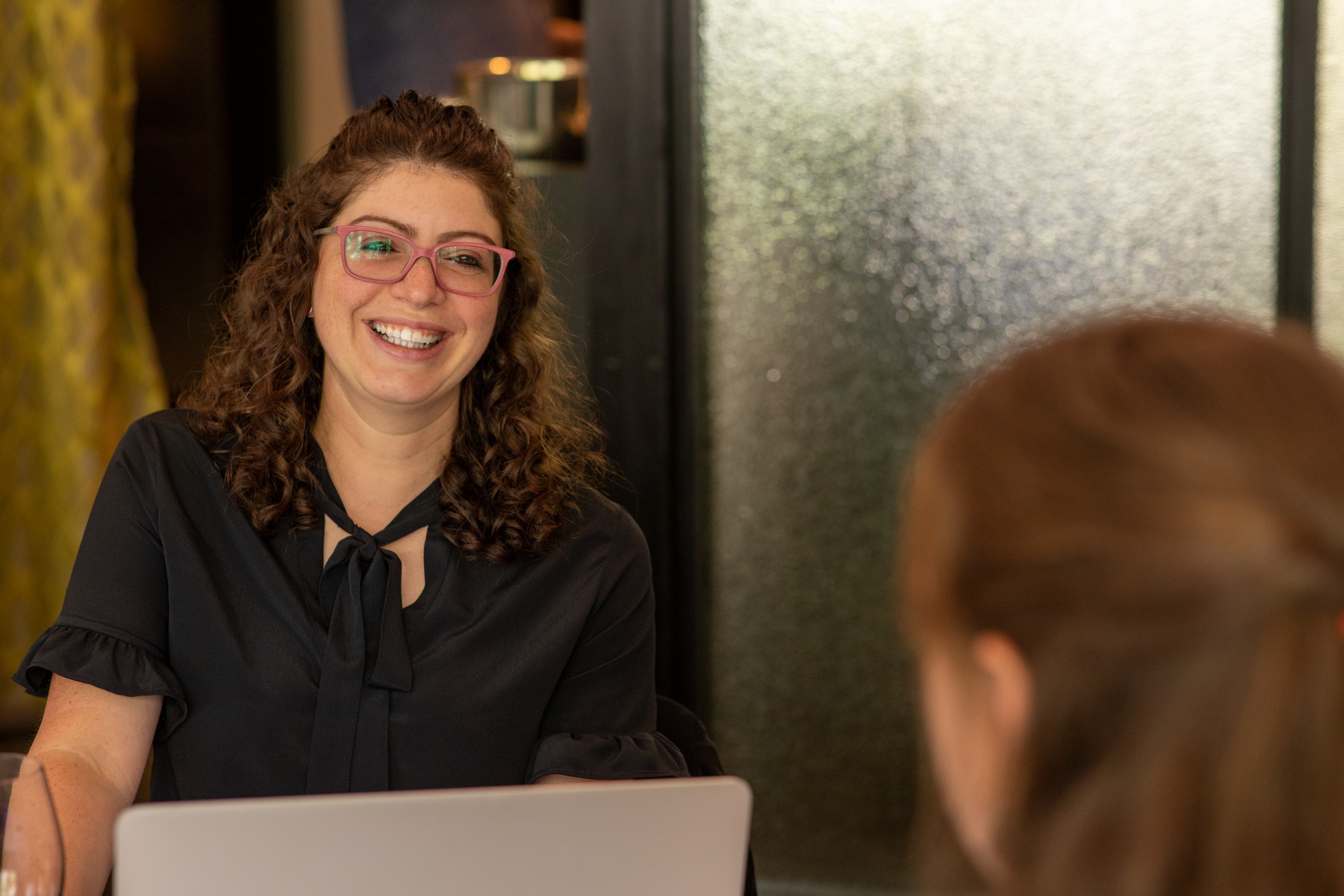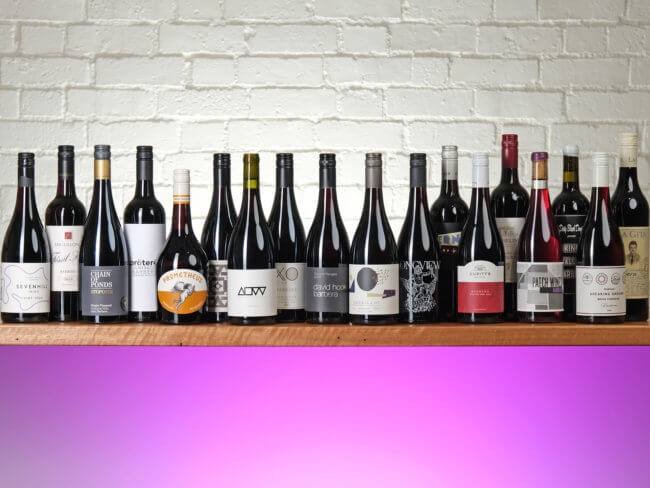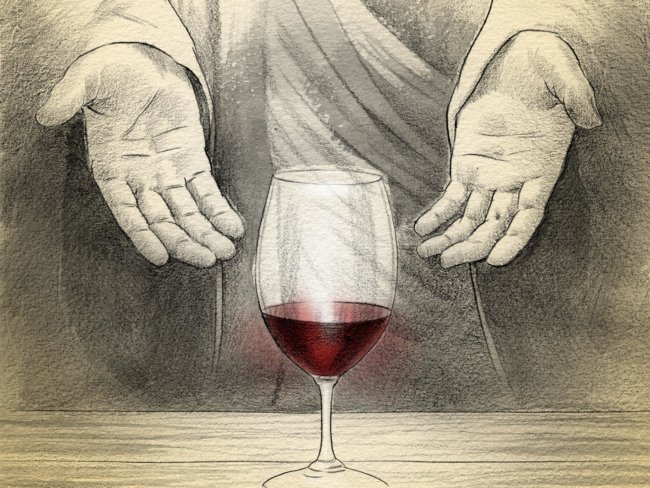Cabernet franc is the other cabernet, largely marginalised in blends, and often with its identity banished to the back label at that. But franc deserves better. It drives some of the great wines of the world, either in part or in total, and it can be rendered as a wine of immediate vibrancy and intoxicating fragrance, or settle into the satisfied purr of a wine of statuesque pedigree, destined for a long life and sustained glory. Franc can be rarefied, but it is typically accessible, both in style and cost, and the engaging variety of expressions that are now appearing on top wineslingers shelves is deserving of our attention.
Cabernet franc, along with sauvignon blanc, is the parent of cabernet sauvignon, but, more often than not, it occupies the darkened space in its long silhouette, and sometimes while doing the lion’s share of the work. Cabernet sauvignon has certainly asserted itself as the patriarch of Bordeaux, with merlot similarly regal, and though cabernet franc is largely responsible for the legendary Cheval Blanc, from Saint-Émilion, it is merlot that takes much of the fame on Bordeaux’s Right Bank.
French origins
When Jonathan Maltus, from Château Teyssier, purchased a vineyard in Saint-Émilion in the 1990s, he was drawn to the old merlot vines. But, so the story goes, Maltus’ vineyard manager didn’t have the heart to tell him that most of the vines were indeed cabernet franc with a small percentage of merlot. Moving past his initial disappointment, Maltus launched La Dôme with the highest proportion of cabernet franc in Bordeaux, and it has become one of the region’s most successful and enduring ‘garagiste’ wines.
Franc is more suited to the cooler conditions of the Right Bank, with cabernet sauvignon a mere seasoning, while franc is sparingly planted on the Left Bank. Given that franc ripens earlier, it is successful further north in the Loire Valley, where it is bottled solo in Touraine (whose appellations include Anjou, Bourgueil, Chinon and Saumur-Champigny). The francs of the Loire tend to be more fragrant and herbal, with lighter structures and typically less input of oak, if at all. Go back 15 or 20 years, and almost all examples were more green than ripe, though this is changing due to better farming, better making and warmer seasons. Cabernet franc arguably reaches its pinnacle in the cult reds of Clos Rougeard, in Saumur. Franc is also grown across southern France as a blending variety, both with the Bordeaux grapes and also others, such as tannat in Madiran.
![]()
Chateau Cheval Blanc – absolutely one of the most prestigious wine producers in Bordeaux.
In France, as well as around the world, franc is widely planted, and no matter where, the fruit is more likely to end up in a blend, and typically as a lesser component, proportionally that is. The Bordeaux model, from either bank, has had the major influence on these planting and blending decisions in the new world. However, in the right conditions, franc is finding a singular voice, sometimes echoing styles of the Loire Valley, sometimes Bordeaux, and sometimes as individual expressions, expressive of place and maker rather than a benchmark.
Beyond France
There are also over 6,000 hectares of cabernet franc in Italy, though some vineyards have not properly identified whether the vines are franc, cabernet sauvignon or indeed carménère (an old Bordeaux grape that was thought to be merlot in Chile, and has since become that country’s defining grape), simply lumping them all together as cabernet. The Veneto is the most prolific home for franc, followed by Friuli-Venezia Giulia, then a smattering in Tuscany, with Bolgheri, on the coast, where it perhaps is accorded most acclaim, and mostly in Bordeaux blends.
Notable examples of 100 per cent cabernet franc are made in the Napa Valley, with Lang & Reid leading the way, but they are increasingly being joined by other makers. Superstar winemaker Aaron Pott has long been an advocate of cabernet franc, and with distinguished stints at leading Saint-Émilion estates, this is perhaps no surprise. And while his portfolio of Pott Wines is largely cabernet sauvignon, his 80 per cent franc ‘Space and Time’ is quite the cult wine. In 2019, the annual Napa barrel auction unusually had a segment of eight straight franc wines, led by Pott’s ‘Gravity’s Rainbow’ as the first lot. A small but significant shift from the prestigious event that is dominated by cabernet sauvignon, and perhaps a sign that franc is on the rise.
![]()
An illustration of cabernet franc painted by Jules Troncy, from the seminal book, Ampélographie (published in 1901).
Franc is proving successful in the cooler viticultural zones of the US, such as Virginia, Michigan and New York’s Finger Lakes, but it is not just succeeding for its earlier ripening properties, offering a somewhat different profile to cabernet sauvignon, and one that is proving to be worth celebrating. Indeed, franc is breaking free of its Bordeaux blend shackles, and the ever-more engaging reds of the Loire Valley are sketching out new possibilities, and ones that are proving inspirational in the new world.
Cabernet franc in Australia
In Australia, cabernet franc is planted in most regions where cabernet sauvignon is planted. But unlike cabernet sauvignon, which is Australia’s second most planted grape, occupying 24,682 hectares (last survey in 2015), franc only has 333 hectares devoted to it. While South Australia dominates the plantings of franc, varietal bottlings come from right across the country, with many notable examples coming out of Victoria and Western Australia. And cooler regions, with sites too cold for reliable cabernet sauvignon production, have proven to be excellent sources.
The Drogemuller family of Paracombe have been growing cabernet franc in the Adelaide Hills since 1983, and after tasting barrels to assemble wines from the 1993 vintage, they decided to release a varietal wine. Although franc has been grown in this country since James Busby first brought vines here in 1833, it’s fair to say that Paracombe have been a pioneer of bottling it solo.
![]()
Cabernet franc grapevines at Paracombe vineyard in Adelaide Hills.
In the Yarra Valley, Punt Road’s Tim Shand has been experimenting with cabernet franc for a few years now, based on 2001 plantings in the Napoleone vineyard. The wine is very much pitched in a Loire Valley style, with juicy approachability and an aromatic spray of leafiness. However, this is as much to do with the variety as it is to do with fermenting the fruit solely as whole bunches. A brave move, but that’s Tim Shand for you.
Michael Downer of Murdoch Hill has similarly been pursuing a Loire Valley style from the Adelaide Hills, with fragrance and poise at its core. While, in Wrattonbully, Xavier Bizot (of the Bollinger family, and Brian Croser’s son-in-law) has been producing a varietal cabernet franc from his close-planted Crayères Vineyard (planted in 2008), which has echoes of Bordeaux mingling with Loire Valley brightness.
In more traditional zones, like Coonawarra, makers like Leconfield work with lower levels of new oak than they do with cabernet sauvignon, but the results are very firmly in a classic cabernet mould, with Bordeaux the historic benchmark. While Mark Gifford’s Blue Poles in Margaret River takes its lead from Bordeaux’s Right Bank – which is unusual for the region – with a merlot and cabernet franc blend, ‘Allouran’, and a varietal bottling of each. Also in the west, AJ Hoadley of La Violetta makes a playfully aromatic, fragrant and textural cab franc, ‘Fric Frac’, from the Great Southern, which is recognisably varietal, but also thoroughly individual.
While the volume of cabernet franc planted in Australia put it on the edge of being a fringe variety already, the amount of wine bottled solo is really very modest. However, while low in volume, there has been a noticeable increase in varietal francs on the market, and the breadth of styles, from light and fragrant to powerful and imposing, immediately triggers the need for a Deep Dive.
So, with five of this country’s best taster in tow, we gathered every Australian example we could and put them under the microscope to find the wines that compelled the most. As usual, this was not an exercise in technical perfection or to champion one style over another, nor was it a search for profundity. Rather, the aim was to find wines of interest and character that reflected variety and place.
Our panel: Jonathan Ross Master Sommelier; Lisa Cardelli DipWSET; Sophie Carbonneau, National Sales Manager Bibendum Wine Co.; Anthony Pieri, Sommelier Andrew McConnell restaurants; Belinda Thomson, Chief Winemaker and Viticulturist Crawford River Wines. All wines were tasted blind.
Cabernet franc, the grape
Franc shares much of its profile with cabernet sauvignon, just as a parent might with its progeny. But there are notable differences. While cabernet sauvignon is a late-ripening grape that can be marginal even in its most hallowed growing regions, franc ripens a good week earlier, providing a little insurance for those blending, and just being a little more reliable for those not. Franc tends to be less imposing than cabernet sauvignon, more fragrant with a less-pronounced tannin structure, and if pushed a little riper can be quite soft on the palate with pooling ripe fruit. Cabernet sauvignon typically has a little more of everything, but whether this makes it superior is a matter of opinion. In Bordeaux, where cabernet sauvignon may be nervy in a cool year, franc will soften the palate and add fragrance. The aromas are similar to cabernet sauvignon, with cassis, leaf, green pepper and tobacco notes, though many attribute raspberry and pepper to singling out franc, and Jancis Robinson notes that it often reminds her of pencil shavings.
![]()
Cabernet franc grapes at Paracombe vineyard in Adelaide Hills.
Blind tasting – the overview
The tasting revealed a broad range of styles, as these tastings often do, and with 19 regions represented over five vintages, from 2019 back to 2015, this was even less surprising. However, beyond age and region, the variety was reflected in very different ways, from bright and immediate almost pinot-like expressions to imposingly classic cabernet renditions.
“I was really pleased to see how many good and sound examples of cabernet franc there are in Australia,” noted Cardelli. “To start, I didn’t expect to be shown more than 10 examples to be honest! Some were so refreshing and had the right amount of herbal and fruit character, in balance, and very enjoyable to drink. Others perhaps had more ‘Australian’ imprint, with dominant eucalyptus character.”
Pieri pointed to the spectrum of wine styles in the tasting: “There were some cool, unoaked, pretty, elegant wines with really fine-grained tannin, which I really enjoyed… A bit of stem inclusion with some of them.”
![]()
Jonathan Ross MS and Anthony Pieri in discussion during our cabernet franc blind tasting. Location: Wynn Room at Grossi Florentino. Photograph by: James Morgan.
“It’s a really exciting discussion and a really exciting variety,” remarked Thomson. “In terms of the feel of the handling of the fruit and the ripeness, on the whole it was done really beautifully, and there was a really minimal percentage that was a little heavy handed on the oak.”
Carbonneau’s reference point was very much centred on the Loire, with the Bordeaux-like examples having less personal appeal. “I love Loire Valley cabernet franc, so this is the benchmark that I’m probably approaching with all these wines, which is probably a flaw. I was looking for freshness and vibrancy and structure, but if I can’t have both, I’d still prefer freshness, maybe to the detriment of complexity at times.”
While Pieri also engaged with the fragrant styles, he found oak had its place. “You definitely want that freshness and vibrancy that you expect from the Loire Valley, but, for me, I’m positive my top wine was oak impacted. It had that sexy, seductive oak character,” he said.
Ross found that while oak was a noticeable feature of some of the wines, that it was important to think of the whole. “Even if there’s a heavy dose of oak now, did the variety personality shine through?” he asked. “And some for me did and some didn’t. Cabernet franc is a really unique, specific grape, with a really unique flavour profile, but it seems like it’s harder to capture that expression in balance, because it can be over-ripe or under-ripe in a matter of days. There’s a really fine balance, where a lot of other grapes are more forgiving.”
Carbonneau noted that “Some had that more Chinon character, that tomato leaf vegetal character,” which sat in contrast to the riper examples. “Cabernet franc’s innate savoury green flavours can be the key to the wine’s triumph or demise, as we all know,” Ross agreed. “But the best wines were not necessarily those that sought to manage that greenness, but rather the ones that curated a complex arrangement of other flavours (fruit, oak, minerality, florals) around it.”
Thomson noted that green notes could also be down to other factors. “We have a hectare [at Crawford River]. It was planted as merlot, but within that planting that is clearly cab franc, we have a tiny percentage of vines that are a different spectrum, a different clone. What we have planted, in the majority, is magnificent for our climate, and those three or four vines, literally three or four, crop at double the yield, sometimes triple the yield. They’re green; they’re horrible. I cut more than 50 per cent off so they ripen at the same time. Clonal variation is discussed little [with cabernet franc]. In some of these wines I think you can really see that slightly riper clone that gives that lovely red/blue fruit spectrum with that delicate in-check tannin, and in some of them you can see that more leafy green edge, with more leafy green-edge tannin.”
Cardelli noted that at the other end of the spectrum, ripeness was pushed too far in a couple of the examples. “Towards the second half [of the tasting] I was more confused because they didn’t show the varietal character I was expecting. …I expected more strawberry, raspberry, leafiness, which needs to be in balance.” But these wines were in the minority, and tasters noted a broad range of flavours and styles.
“From an overall point of view, the wines with less alcohol/ripeness seemed the most successful examples in this tasting,” agreed Carbonneau, “showing greater appeal and drinkability. It seems like cab franc grown in Australia can go over the fence, even with just a degree too much … Still, there were some excellent, balanced, elegant and digestible examples which I would happily drink a bottle (or two) of!”
Aside from some criticisms, the majority of wines were very well received, and the sheer diversity was exciting. “I was super excited,” said Thomson. “I thought it was an awesome bracket. There was a minimal percentage of wines that were a bit stuffed… in terms of age, or lack of balance, ripeness or steminess, or whatever the case may be, they were very much in the minority … a seriously positive bracket of deliciousness.”
![]()
All wines were decanted into numbered bottles tasted blind for the blind tasting. Location: Wynn Room at Grossi Florentino. Photograph by: James Morgan.
The top wines from the blind tasting
![]()
2019 Murdoch Hill ‘Vis-à-Vis’ Cabernet Franc (Adelaide Hills) $36
This was rated by three panellists as their top wine of the tasting, with Thomson, Ross and Carbonneau putting at the head of their tasting sheets. “Bright, juicy fruit. Red and blue spectrum with spiced savoury edge. Supple texture, nice use of oak. Balanced with fresh acidity and lingering, soft tannins. Saline. Delicious,” wrote Thomson. “Bright and punchy nose with carbonic character. Reminiscent of Anjou Rouge. The palate is rounded and silky with excellent persistence. Impressive. Whilst serious with chalky tannins, the palate is juicy and hedonistic with floral undertone. Excellent,” noted Carbonneau. “I found this wine to show balance and precision far beyond the field,” reflected Ross “Its ripeness was, for me, in a perfect place to express juicy aromatic dark fruits with developed succulent tannins, while keeping only the attractive green flavours of cab franc. Think green peppercorn, tomato seed and bay leaf wrapped in a robe of velvety black plum skin and black raspberry blossoms. Its finish was fresh with enough acid to help you salivate to wash away the dusty tannins. This balance results in harmony and energy on the palate.”
![]() 2019 Aller Trop Loin Cabernet Franc (Yarra Valley) $33
2019 Aller Trop Loin Cabernet Franc (Yarra Valley) $33
This was picked by three panellists, with Carbonneau, Thomson and Cardelli ranking it in their top-eight selections. “Deep nose, restrained yet enticing. Showing typical Saumur nose of blue fruits (blueberry/blue plums). Slightly bigger style than the preceding wine [Murdoch Hill], with plenty of fresh blue fruit flavours. Food-friendly structure and great vibrancy. Wow,” wrote Carbonneau. “Really ripe fruit with undertones of [grape] seed phenolics. Silky palate with supple tannins. Slightly saline with nice spice. Tad sweet and sour,” noted Thomson. Cardelli found it to be “redolent of red fruit, on the ripe side, some black fruit, leafy and spicy, bit grippy on the palate, some juiciness, nice fruit flavour profile, good length.”
![]() 2019 Airlie Bank ‘Franc’ Cabernet Franc (Yarra Valley) $22
2019 Airlie Bank ‘Franc’ Cabernet Franc (Yarra Valley) $22
Both Ross and Pieri ranted this highly, with Cardelli also including it in her top eight. “A focused and linear example in tune with the more delicate examples of cab franc from the Loire Valley. The fruit blends from dark red to light black, always staying fresh with gentle greenness. This wine was quaffable, and delicious,” wrote Ross. “A bit underripe on the nose with a pleasant oak/spice/fruit character and fine grained, well-integrated tannin that is soft and supple. With time in the glass, the nose is quite floral and very pleasant. Well done,” noted Pieri. “Green and herbal, raspberry leaf, some strawberries,” observed Cardelli. “Good mid-palate concentration, some drive and pretty finish.”
![]() 2017 The Wanderer Cabernet Franc (Yarra Valley) $35
2017 The Wanderer Cabernet Franc (Yarra Valley) $35
This was rated highly by Ross and was Cardelli’s top wine of the tasting. “Green bell pepper, leafy to start with. Then unfolding lovely crunchy raspberries and cranberries with a hint of floral and spices. Nice palate concentration, some more leafy character but very good fruit core, lovely tannins and refreshing back of palate – good length,” wrote Cardelli. “This wine seemed to express what the winemaker intended,” noted Ross, “and that follow through is a success alone. This was my favourite of the early picked, red-fruited wines. Along with the bright and crunchy red fruit comes a plethora of fresh green herbs, but they were all soft enough to still season the fruit rather than overpower it.”
![]() 2019 Tomfoolery ‘Monkey Business’ Cabernet Franc (Eden Vally) $50
2019 Tomfoolery ‘Monkey Business’ Cabernet Franc (Eden Vally) $50
Cardelli and Thomson both rated this high up on their top-eight lists. “Perfumed, delicious strawberries and cream, raspberry, vanilla spice on the palate, smooth and round, oak has been used but rather than overshadowing the fruit is giving it a nice hug, well-integrated and bit more generous example but still in the limits,” wrote Cardelli. “A real blue spectrum of fruit. Plush palate which is very ‘correct’ though lacks some definition,” reflected Thomson. “Medium weighted. Appealing notes of bruised red apple skin. Fresh and balanced with lovely tannin profile. Soft and in check, well poised.”
![]() 2018 3 Drops Cabernet Franc (Mount Barker) $27
2018 3 Drops Cabernet Franc (Mount Barker) $27
Both Ross and Thomson included this in their top selections. “Ripe, fresh fruit with nice savoury qualities. Blue spectrum of fruit with hints of black. Restraint and balance. Acid present but in check. Long and even tannic profile,” wrote Thomson.
![]() 2019 La Violetta ‘Fric Frac’ Cabernet Franc (Great Southern) $34
2019 La Violetta ‘Fric Frac’ Cabernet Franc (Great Southern) $34
This found a place on the top-eight lists of three tasters, Carbonneau, Thomson and Cardelli. “Lovely red fruits, raspberry leaf, sappy and crunchy, great mid core and good length, well executed,” wrote Cardelli. “Bright, blue fruit which shows nice ripeness. Even, supple tannin structure with lovely texture, balance and finesse. Fresh, long and lively,” reflected Thomson. “Perhaps recently bottled,” she added. “Lovely intensity on the nose with deep-red fresh-fruit undertones,” wrote Carbonneau. “While relatively simple, the palate has a thirst-quenching, immediate appeal to it with plenty of juice and flesh finishing on light, peppery notes. I want some more.”
![]() 2017 Blue Pyrenees ‘The Pom’ Cabernet Franc (Pyrenees) $28
2017 Blue Pyrenees ‘The Pom’ Cabernet Franc (Pyrenees) $28
Pieri and Carbonneau both included this in their top-eight lists. “Pleasantly lifted eucalypt, dark black fruit aromas and a great palate shape with graphite, dusty tannin and persistent, almost peppery finish,” wrote Pieri. “Touch of oxidation on the nose with Nebbiolo-reminiscent notes: tar, violet, purple plums,” noted Carbonneau. “Lovely elegance on the palate which stands out versus the second half of the wines in this tasting. Enticing notes of pomegranate and fresh red currant. Bright acidity that makes you come for more.”
![]() 2016 Sally’s Hill Cabernet Franc (Pyrenees) $38
2016 Sally’s Hill Cabernet Franc (Pyrenees) $38
This was Pieri’s top wine of the tasting. “Restrained, masterful use of high-quality new oak, palate is well-framed and powerful, with finesse and elegance, persistent and fine-grained tannin,” he wrote.
![]() 2018 Leconfield Cabernet Franc (Coonawarra) $28
2018 Leconfield Cabernet Franc (Coonawarra) $28
Thomson and Carbonneau both placed this in their top eight. “Shows more heat on the nose but still with a lovely perfume on the red fruit spectrum. Impressive balance between bright, crunchy, slightly carbonic red fruits and refreshing acidity,” wrote Carbonneau. “Blue fruit with confected cassis characters. Bright with lovely tannin profile. Structure and length. Savoury and balanced with very good length. Saline,” reflected Thomson.
![]() 2018 The Stoke Cabernet Franc (Kangaroo Island) $35
2018 The Stoke Cabernet Franc (Kangaroo Island) $35
Pieri: “Savoury, spicy nose of black fruit and flowers with some slightly lifted stem spice and oak seriousness. Palate is well shaped, defined and moderately persistent. Well Done.”
![]() 2018 Aller Trop Loin Cabernet Franc (Yarra Valley) $33
2018 Aller Trop Loin Cabernet Franc (Yarra Valley) $33
Cardelli: “Bit reductive to begin with, then the varietal pyrazines, earthy and savoury, that is the main core of the wine. Fruit is on the ‘dark’ side, low tannins, easy drinking and tasty at the same time. A different example with its own appeal.”
![]() 2018 Marcus Hill Cabernet Franc (Geelong) $25
2018 Marcus Hill Cabernet Franc (Geelong) $25
Pieri: “Fair thwack of oak spice on the nose, but an inviting complex vanilla spice aroma. Palate is moderately complex, fruit scented and with persistent, elegant, fine-grained tannin and lingering finish.”
![]() 2018 Marq Cabernet Franc (Margaret River) $25
2018 Marq Cabernet Franc (Margaret River) $25
Ross: “This wine was a bit more subtle aromatically. Though on the palate it achieved a great texture and weight with a finish that lifted its density. Everything I loved about this wine was tactile. Aromatically, it was textbook, which can be boring. The palate was exciting.”
![]() 2019 The Other Wine Co. Cabernet Franc (Kangaroo Island) $35
2019 The Other Wine Co. Cabernet Franc (Kangaroo Island) $35
Carbonneau: “Bright and refreshing. Strawberries and red currants, raspberry cordial on the palate, super juicy and fragrant, slightly dry tannins add lovely structure to this bright and fresh example.”
![]() 2016 Alkoomi Black Label Cabernet Franc (Frankland River) $28
2016 Alkoomi Black Label Cabernet Franc (Frankland River) $28
Carbonneau: “Denser, darker and more restrained on the nose than most wines in this line-up. Complex and showing some development. A wine starting to develop but still with a long life ahead, thanks to plenty of chewy, slightly drying tannins and intense savouriness. A standout with its distinct personality versus all the other wines tasted today.”
![]() 2017 Best’s Cabernet Franc (Great Western) $45
2017 Best’s Cabernet Franc (Great Western) $45
Thomson: “Slightly gritty blue fruit quality – graphite. Soft, supple tannins with good balance. Saline and slurpy.”
![]() 2019 Somos Cabernet Franc (McLaren Vale) $32
2019 Somos Cabernet Franc (McLaren Vale) $32
This found favour with both Cardelli and Carbonneau. “Delicate example on the nose, crunchy and juicy on the palate, pretty and restrained, some sweet spices. Oak has masked a bit of the green character of the variety but still smashable,” wrote Cardelli. “Distinctive floral notes on the nose make this wine stand out from the pack. The palate is juicy and vibrant which compensate for the relative simplicity of flavours. Good intensity with good tannin quality,” reflected Carbonneau.
![]() 2018 Three Hills Cabernet Franc (Margaret River) $38
2018 Three Hills Cabernet Franc (Margaret River) $38
Pieri: “Heavy on the oak use, with density and ripeness to match, warm spice on the nose with a dense core of fruit with spicy cinnamon potpourri character.”
![]() 2018 Blue Poles Cabernet Franc (Margaret River) $48
2018 Blue Poles Cabernet Franc (Margaret River) $48
Ross: “This wine was certainly made with a nod to classic Bordeaux-style wines with a healthy regime of oak barrel maturation. I found it to be a wine that is built to last. It had bright, and somewhat loud fruit. The oak was just as bright and loud. It will be interesting to see how this wine ages. It is in good balance today, and if that stays constant this will likely be one of the most age-worthy wines in the pack.”
![]() 2018 Kellybrook Cabernet Franc (Yarra Valley) $35
2018 Kellybrook Cabernet Franc (Yarra Valley) $35
Ross: “Ripe, in a guilty pleasure kind of way. This … is fun, juicy and plump. Not a wine for drinkers that take themselves too seriously, but who wants to drink with them? …Plump black plum and underripe blueberry. Not a ton of greenness or spice, so for those that want to try cab franc as a departure from shiraz or cab sauv, this is perfect. I could really use this wine to make a lot of people happy in a restaurant.”
![]() 2019 Di Giorgio Cabernet Franc (Coonawarra) $25
2019 Di Giorgio Cabernet Franc (Coonawarra) $25
Thomson: “Blue and spicy. Salivating, with very good textural quality. Even and balanced. Pretty, though the green spectrum is ever so slightly out…”
![]()
2019 Frankland Estate Cabernet Franc (Frankland River) $35
Carbonneau: “The nose is vibrant; jumping out of the glass with typical cab franc notes of red berries. The palate is pure and bright with an excellent balance. Beautiful intensity of fruit finishing with cranberry-like tannins.
![]()
2016 Terre a Terre Cabernet Franc (Wrattonbully) $40
Pieri: “Lashings of vanilla spice and sawdust with a healthy dose of ripe fruit support. Tannins frame a well-posed palate and are persistent, long lasting and fresh, enlivened by crunchy acid. Speaks with a decidedly French accent, like what quality Right Bank Bordeaux might be like in a youthful, ripe vintage.”
![]()
2016 Paracombe Cabernet Franc (Adelaide Hills) $30
Both Pieri and Ross included this in their top-eight selections. “Perfumed nose with herbaceous, menthol complexity that is unencumbered by oak. Pithy, fine tannin, elegant,” wrote Pieri. “Of the wines with a touch of age, this showed how the fruity and savoury qualities of cab franc flirt with each other for the life of a wine. They belong together, and this wine shows that charm,” noted Ross.
The Panel
![]()
Jonathan Ross was the Head Sommelier at the lauded Eleven Madison Park, in New York, for five years, which was voted the World’s Best Restaurant in 2017. He passed the notoriously difficult Master Sommelier exam (there are only 269 worldwide) the same year. Ross was most recently the Beverage Director for the Rockpool Dining Group for their Premium Restaurants in Victoria. He is currently setting up a business focusing on importing artisanal Australian wine to the USA, alongside his wife, Jane Lopes. Ross also makes wine under his Micro label, from Geelong, the Barossa Valley and Mornington.
![]() Belinda Thomson is the Chief Winemaker and Viticulturist at her family winery, Crawford River Wines, in Henty. After completing postgraduate studies in oenology and viticulture in 2002, Thomson worked in New Zealand, Italy and Germany before returning home for the 2004 vintage. She helped establish a winery in Rueda, Spain, in 2008 and worked the seasons both in south-west Victoria and Spain for a decade. She took over the running of Crawford River in 2014. Thomson is also a respected wine show judge.
Belinda Thomson is the Chief Winemaker and Viticulturist at her family winery, Crawford River Wines, in Henty. After completing postgraduate studies in oenology and viticulture in 2002, Thomson worked in New Zealand, Italy and Germany before returning home for the 2004 vintage. She helped establish a winery in Rueda, Spain, in 2008 and worked the seasons both in south-west Victoria and Spain for a decade. She took over the running of Crawford River in 2014. Thomson is also a respected wine show judge.
![]() Anthony Pieri made his way through university working in restaurants with progressively detailed wine lists, eventually passing the Court of Master Sommeliers certified exam. He has worked vintages in New Zealand and Spain, eventually returning down under to work for such names as Shannon Bennett and Jacques Reymond. He is currently working for Andrew McConnell’s restaurant group, focusing on opening Cavendish House, as the buyer and head sommelier. He is a French Wine Scholar and has most recently sat the infamously arduous Master of Wine exam.
Anthony Pieri made his way through university working in restaurants with progressively detailed wine lists, eventually passing the Court of Master Sommeliers certified exam. He has worked vintages in New Zealand and Spain, eventually returning down under to work for such names as Shannon Bennett and Jacques Reymond. He is currently working for Andrew McConnell’s restaurant group, focusing on opening Cavendish House, as the buyer and head sommelier. He is a French Wine Scholar and has most recently sat the infamously arduous Master of Wine exam.
![]() Sophie Carbonneau worked for 10 years as a sommelier both in Australia and her native Montreal, Canada. She moved to the wholesale side of the business a decade ago, first alongside legendary retailer, importer and wine judge Randall Pollard at Heart & Soil, his import business, then at industry-leading independent importer and local wholesaler Bibendum Wine Co. She is now Bibendum’s National Sales Manager. Carbonneau is also a second year MW student, though she has pressed pause on her studies – for now.
Sophie Carbonneau worked for 10 years as a sommelier both in Australia and her native Montreal, Canada. She moved to the wholesale side of the business a decade ago, first alongside legendary retailer, importer and wine judge Randall Pollard at Heart & Soil, his import business, then at industry-leading independent importer and local wholesaler Bibendum Wine Co. She is now Bibendum’s National Sales Manager. Carbonneau is also a second year MW student, though she has pressed pause on her studies – for now.
![]()
Lisa Cardelli is a WSET Diploma holder who currently works as a wholesale representative for specialist Italian importer Tricolore, as well as at the legendary Prince Wine Store as a WSET Educator. Until August 2019, she was the Head Sommelier and Buyer at Rosetta. She is also a wine show judge, most recently at the Royal Melbourne Wine Awards.
How the tasting was conducted
All wines were decanted into clear wine bottles, so as to not let bottle shape or closure type intrude on the appraisal. The wines were presented with no particular order to the wines. Once the initial tasting was completed, the panel re-tasted as they saw fit to confirm or recalibrate their first impressions, and to give those wines tasted first a chance to be properly compared to those tasted later. The identity of the wines was revealed after the panellists had disclosed their opinions.
![]()
![]()

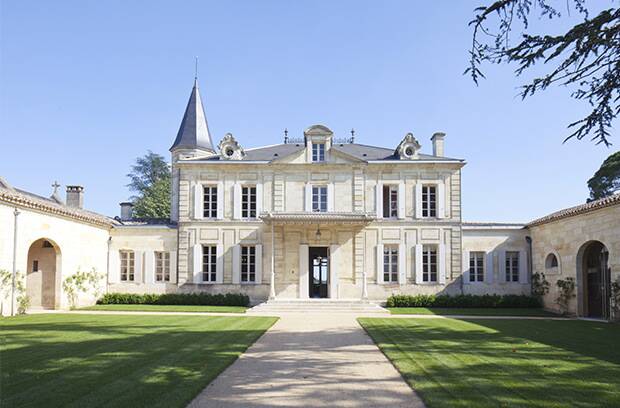



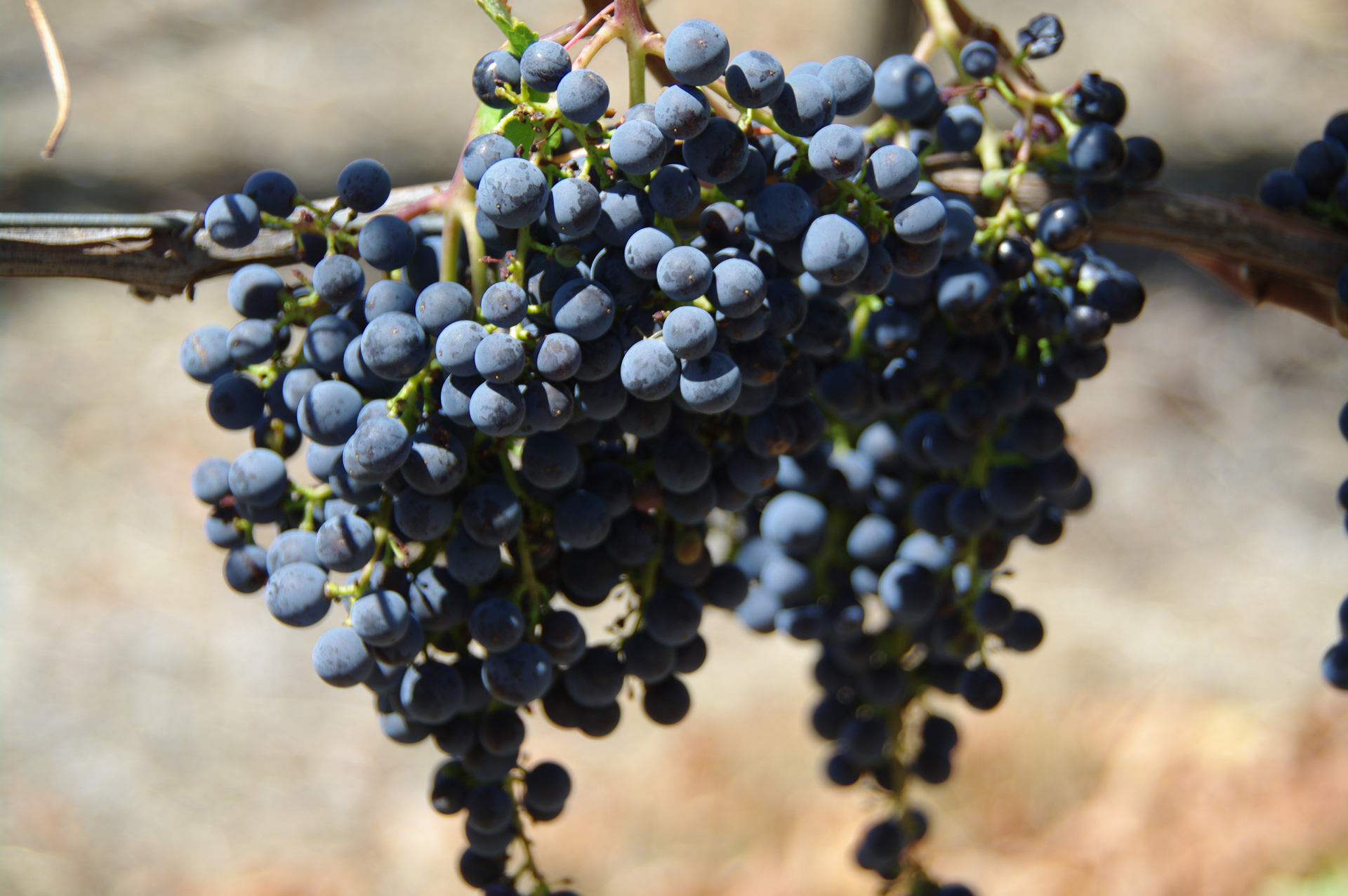






 2019 Aller Trop Loin Cabernet Franc (
2019 Aller Trop Loin Cabernet Franc ( 2019 Airlie Bank ‘Franc’ Cabernet Franc (
2019 Airlie Bank ‘Franc’ Cabernet Franc ( 2017 The Wanderer Cabernet Franc (
2017 The Wanderer Cabernet Franc ( 2019 Tomfoolery ‘Monkey Business’ Cabernet Franc (Eden Vally) $50
2019 Tomfoolery ‘Monkey Business’ Cabernet Franc (Eden Vally) $50 2018 3 Drops Cabernet Franc (Mount Barker) $27
2018 3 Drops Cabernet Franc (Mount Barker) $27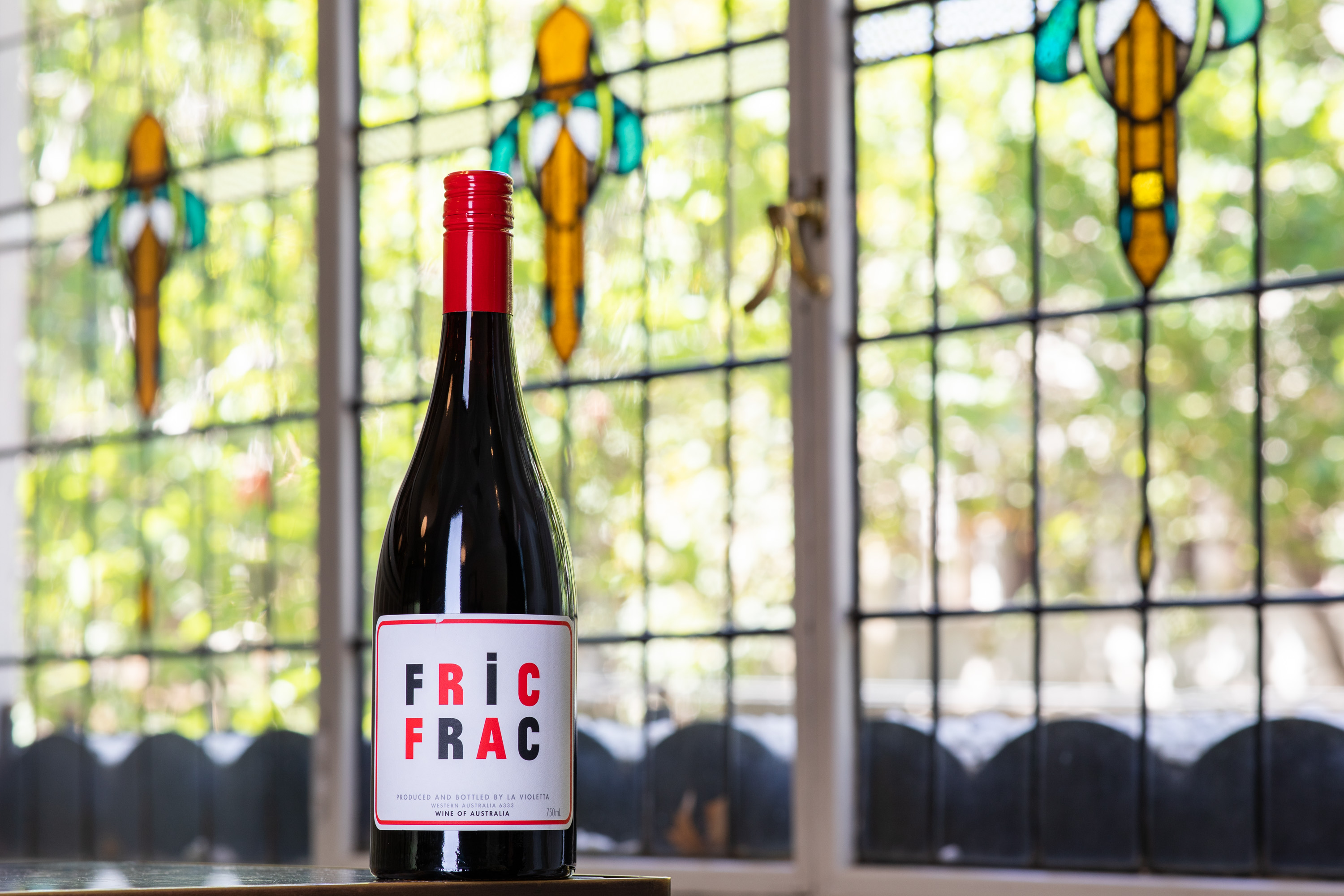 2019 La Violetta ‘Fric Frac’ Cabernet Franc (Great Southern) $34
2019 La Violetta ‘Fric Frac’ Cabernet Franc (Great Southern) $34 2017 Blue Pyrenees ‘The Pom’ Cabernet Franc (Pyrenees) $28
2017 Blue Pyrenees ‘The Pom’ Cabernet Franc (Pyrenees) $28 2016 Sally’s Hill Cabernet Franc (Pyrenees) $38
2016 Sally’s Hill Cabernet Franc (Pyrenees) $38 2018 Leconfield Cabernet Franc (Coonawarra) $28
2018 Leconfield Cabernet Franc (Coonawarra) $28 2018
2018  2018 Aller Trop Loin Cabernet Franc (
2018 Aller Trop Loin Cabernet Franc ( 2018 Marcus Hill Cabernet Franc (Geelong) $25
2018 Marcus Hill Cabernet Franc (Geelong) $25 2018 Marq Cabernet Franc (
2018 Marq Cabernet Franc ( 2019 The Other Wine Co. Cabernet Franc (Kangaroo Island) $35
2019 The Other Wine Co. Cabernet Franc (Kangaroo Island) $35 2016 Alkoomi Black Label Cabernet Franc (Frankland River) $28
2016 Alkoomi Black Label Cabernet Franc (Frankland River) $28 2017 Best’s Cabernet Franc (Great Western) $45
2017 Best’s Cabernet Franc (Great Western) $45 2019
2019  2018 Three Hills Cabernet Franc (
2018 Three Hills Cabernet Franc ( 2018 Blue Poles Cabernet Franc (
2018 Blue Poles Cabernet Franc ( 2018 Kellybrook Cabernet Franc (
2018 Kellybrook Cabernet Franc ( 2019 Di Giorgio Cabernet Franc (Coonawarra) $25
2019 Di Giorgio Cabernet Franc (Coonawarra) $25


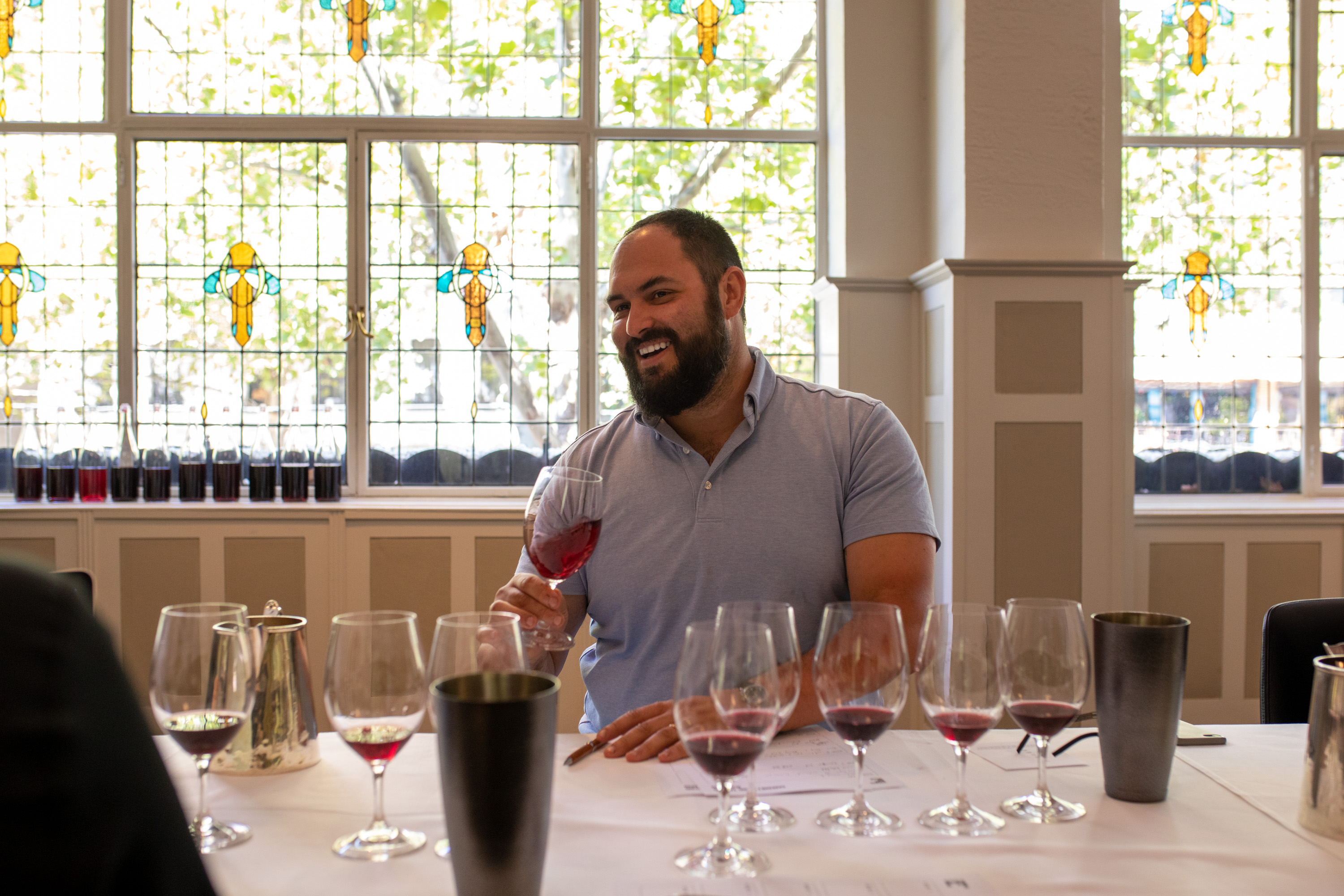
 Belinda Thomson is the Chief Winemaker and Viticulturist at her family winery, Crawford River Wines, in Henty. After completing postgraduate studies in oenology and viticulture in 2002, Thomson worked in New Zealand, Italy and Germany before returning home for the 2004 vintage. She helped establish a winery in Rueda, Spain, in 2008 and worked the seasons both in south-west Victoria and Spain for a decade. She took over the running of Crawford River in 2014. Thomson is also a respected wine show judge.
Belinda Thomson is the Chief Winemaker and Viticulturist at her family winery, Crawford River Wines, in Henty. After completing postgraduate studies in oenology and viticulture in 2002, Thomson worked in New Zealand, Italy and Germany before returning home for the 2004 vintage. She helped establish a winery in Rueda, Spain, in 2008 and worked the seasons both in south-west Victoria and Spain for a decade. She took over the running of Crawford River in 2014. Thomson is also a respected wine show judge.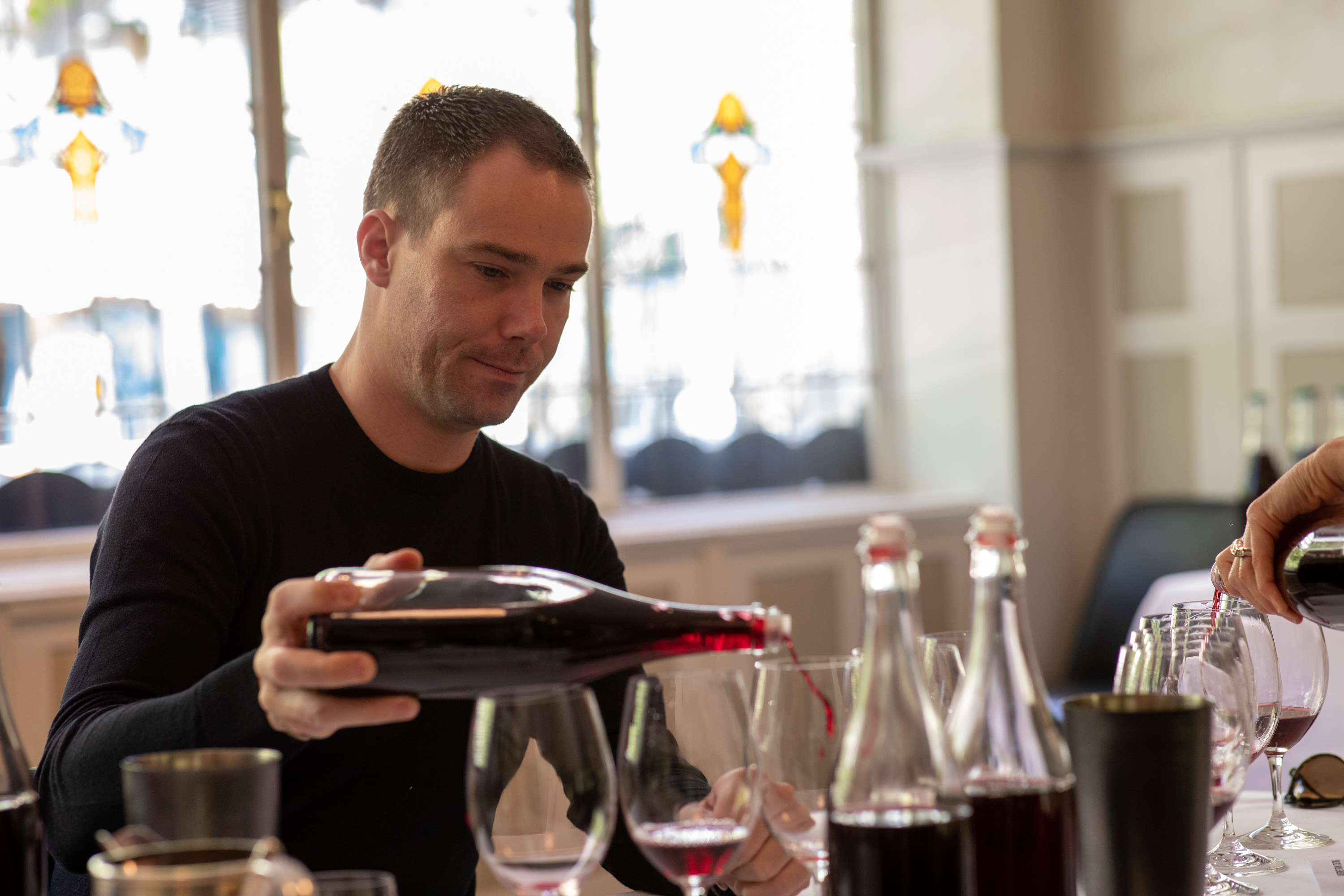 Anthony Pieri made his way through university working in restaurants with progressively detailed wine lists, eventually passing the Court of Master Sommeliers certified exam. He has worked vintages in New Zealand and Spain, eventually returning down under to work for such names as Shannon Bennett and Jacques Reymond. He is currently working for Andrew McConnell’s restaurant group, focusing on opening Cavendish House, as the buyer and head sommelier. He is a French Wine Scholar and has most recently sat the infamously arduous Master of Wine exam.
Anthony Pieri made his way through university working in restaurants with progressively detailed wine lists, eventually passing the Court of Master Sommeliers certified exam. He has worked vintages in New Zealand and Spain, eventually returning down under to work for such names as Shannon Bennett and Jacques Reymond. He is currently working for Andrew McConnell’s restaurant group, focusing on opening Cavendish House, as the buyer and head sommelier. He is a French Wine Scholar and has most recently sat the infamously arduous Master of Wine exam. Sophie Carbonneau worked for 10 years as a sommelier both in Australia and her native Montreal, Canada. She moved to the wholesale side of the business a decade ago, first alongside legendary retailer, importer and wine judge Randall Pollard at Heart & Soil, his import business, then at industry-leading independent importer and local wholesaler Bibendum Wine Co. She is now Bibendum’s National Sales Manager. Carbonneau is also a second year MW student, though she has pressed pause on her studies – for now.
Sophie Carbonneau worked for 10 years as a sommelier both in Australia and her native Montreal, Canada. She moved to the wholesale side of the business a decade ago, first alongside legendary retailer, importer and wine judge Randall Pollard at Heart & Soil, his import business, then at industry-leading independent importer and local wholesaler Bibendum Wine Co. She is now Bibendum’s National Sales Manager. Carbonneau is also a second year MW student, though she has pressed pause on her studies – for now.